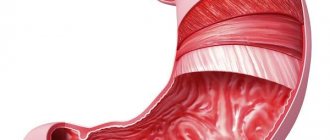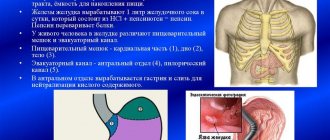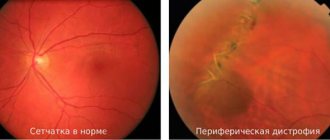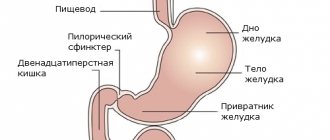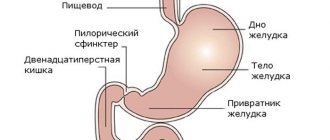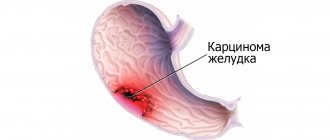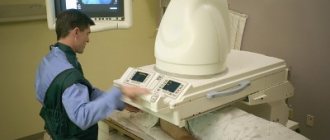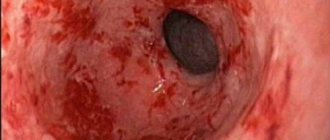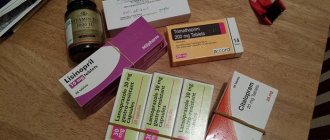Drug therapy for gastric ulcers is considered the main way that can bring the disease into remission. As for folk remedies, they are significantly inferior in terms of effectiveness and efficiency of ulcer treatment.
It is important to know that self-medication can provoke serious consequences: perforation, bleeding, cancer, death. An ulcer is treated successfully only when combined groups of drugs prescribed by a gastroenterologist and therapist are used.
Indications and contraindications
Treatment of stomach ulcers is an important process that requires a responsible approach. All medications for ulcers must be selected and prescribed by the attending physician. There are certain indications and prohibitions for treating peptic ulcers with tablets. You must strictly follow your doctor's instructions.
It is necessary to take tablets for stomach ulcers and other medications in the following situations:
- if the ulcer worsens;
- with a chronic form of the disease;
- diet therapy does not give a positive result;
- the ulcer progresses;
- damage to the duodenum and stomach is observed;
- prevention of stomach ulcers;
- severe pain prevails;
- internal bleeding began.
In addition, there are some contraindications to drug treatment of ulcers. It is prohibited to take medications for ulcers in the following cases:
- during pregnancy, lactation;
- exacerbation with heavy bleeding;
- allergies to certain medications;
- children under twelve years of age;
- the presence of individual intolerance;
- systemic pathology infectious.
For gastric ulcers, you need to know exactly which medications are the best and safest. At this time, the entire gastrointestinal tract suffers, so the development of dysbiosis should not be allowed.
How is cauterization performed for stomach ulcers?
Cauterization is carried out using special endoscopes with fiber optics. The patient is given a rubber tube of the same diameter to swallow as used for gastrointestinal diagnostics. Then, using a camera at the end of the tube, they look through the inner surface of the stomach, find a wound, and burn it with a beam. In order for the method to produce results, the procedure must be carried out 7-10 times.
For gastritis, 4-5 procedures are necessary.
Laser therapy together with medication significantly reduces the dosage of medications, which prevents complications. This method also provokes the mobilization of the body’s protective structures, thereby reducing the time for restoration of gastrointestinal functions. The method is actively used to treat gastritis. The essence of the method is that by penetrating the tissue, the light beam increases the blood supply to the area, stimulates metabolic processes at the cellular level, relieves pain, swelling and inflammation.
Specifics of complex therapy
When choosing a medicine for an ulcer, it is necessary to take into account the reasons for its development. Provoking factors for the appearance of stomach ulcers can be:
- stress;
- unbalanced diet, fasting or overeating;
- concomitant diseases;
- presence of bad habits;
- weakened immunity.
To achieve better treatment results, a special complex of drugs is proposed. Do not forget that physiotherapy, proper nutrition, a healthy lifestyle and reliable folk remedies are used as additional treatment for gastric ulcers.
A stomach ulcer requires the following competent therapy:
- treatment in a sanatorium;
- if necessary, surgery;
- diet therapy;
- complex of medications;
- correction of the psycho-emotional factor;
- quitting smoking, drugs, and alcoholic beverages.
For stomach ulcers, treatment should be carried out with three main groups of drugs:
- PPI;
- Antibiotics;
- Histamine receptor blockers.
For auxiliary therapy, a complex of drugs from the following groups is selected:
- Antacids, anabolics;
- Vitamin preparations;
- Immunostimulants;
- Antiemetics;
- Analgesics and reparants;
- Gastroprotectors;
- Antispasmodics and Ganglioblockers;
- Anticholinergics.
The attending physician prescribes medications based on the severity of the disease, the individual characteristics of the body and the severity of symptoms.
Prokinetic class drugs
Motilium
Release form of the drug Motilium
It is produced in three pharmacological forms at once - tablets, lozenges for resorption and suspension. It is necessary to drink Motilium strictly thirty minutes before meals three times a day. Tablets are taken in the amount of six, divided into three doses. The lozenges are dissolved in the same amount under the tongue, usually it does not take more than one minute. The suspension is prescribed at the rate of 5 ml for every 10 kg of weight, and it is worth shaking the bubble very intensively to distribute all the active substance in equal concentration. The duration of therapy is determined separately for each patient.
Nexium
Nexium is a very effective medicine
Expensive, but very effective medicine. Patients receiving therapy lasting no more than a month are prescribed 40 mg. In this case, you should swallow the pill without dissolving, chewing or cutting it. If the patient has problems with the swallowing reflex, he is allowed to dissolve the tablet in 100 ml of still mineral water and drink immediately. If treatment lasts more than one month, the patient takes 20 mg once a day. In both cases, Nexium should be taken before eating; it is better to do it at breakfast.
Cerucal
The drug Cerucal
Available only in tablet form. You should take 10 mg half an hour before your main meal three times a day. The duration of treatment in this case can range from 14 days to six months. If you take a large dosage of Cerucal, the patient may experience such dangerous conditions as convulsions, increased anxiety or excessive loss of strength, up to the impossibility of independent movement, until the concentration of all components in the blood decreases.
Attention! When using prokinetics, the feeling of vomiting and nausea completely disappear, but only if the recommendations for use are followed.
Treatment regimen
The disease can be effectively treated if a scheme of two main stages is applied. They proceed as follows:
Stage 1
Duration – seven days. During this time, the patient must take a complex of medications consisting of two types of antibiotics. Most often, this is Clarithromycin, Metronidazole. In addition, proton pump inhibitors - Lansoprazole - are mandatory. According to the decision of the attending physician, these anti-ulcer drugs can be replaced with analogues. As for the dosage, it is determined individually. The first stage of treatment sets the main goal of completely eliminating Helicobacter pylori. In 95% of diseases treated according to the proposed scheme, it is possible to cope with the set goal.
Stage 2
Duration – fourteen days. This stage is necessary if the Helicobacter Pylori bacterium remains after the first stage. To combat it, a tandem of powerful antibiotics is used: Tetracycline with Metronidazole. Bismuth preparations, PPIs (Rabeprazole), and histamine receptor blockers are offered as additional drugs.
A patient taking such medications must take wound-healing, painkillers, anti-inflammatory, and antispasmodic drugs. They will help you quickly get rid of discomfort, painful symptoms, and speed up recovery.
Extracts, vitamins, decoctions and herbal infusions can be used as folk remedies. The best traditional healers:
- sea buckthorn oil;
- potato, cabbage juice;
- honey;
- milk;
- herbs - mint, St. John's wort, dandelion, chamomile and lemon balm.
An ulcer is a disease characterized by varying levels of acidity of gastric secretions. Very often the disease leads to serious complications, so treatment is mandatory.
Recipes for folk remedies
- You need to drink 20 ml daily on an empty stomach. alcohol
- Drink 1 tsp. ethanol, and then eat a piece of butter or a scrambled raw egg. The effect of this remedy is explained by the fact that alcohol “cauterizes” the ulcer formation, and the oil and egg envelop the walls of the stomach. It is also permissible to “snack” with pork fat or vegetable oil.
- It is unknown why adherents of traditional medicine began to rely on the power of walnuts and alcohol. This may be due to the beneficial effect of nut milk on the mucous membrane. However, the following recipe is floating around the net: take a kilogram of walnut shells, pour pure alcohol, let it brew for 10 days. And then strain. Take tincture three times a day, 1 tbsp. l. There is an identical recipe using young pine cones. We think that comments are unnecessary here.
Remember that most doctors advise categorically to avoid any prescriptions containing alcohol to combat gastritis and ulcers. This substance only further injures the already irritated and ulcerated gastric mucosa.
List of medications
Tablets for the complex treatment of ulcers are taken only by a doctor. Self-medication can lead to complications.
Antibiotics
Amoxicillin
The antibiotic is semi-synthetic and belongs to the penicillin group. It is characterized by excellent resistance to the aggression of gastric juice, it is capable of being absorbed by 93 percent. Instantly spreads through fluids, tissues, and covers the entire body of the patient. Apply twice a day.
Metronidazole
An excellent antiprotozoal and antimicrobial drug with a fairly wide sphere of action. It is a reliable and very effective antibiotic. Recognized as a synthetic analogue of a drug such as Azomycin. When exposed to it, destruction of microbes and parasites is observed.
Histamine receptor blockers
Nizatidine
It is classified as a histamine III receptor blocker. Able to suppress the production of hydrochloric acid. Significantly reduces the increased activity of pepsin, skillfully maintains the pH level at normal for twelve hours from the moment of use.
Main groups of drugs
Medicines for stomach ulcers are divided into separate groups, which differ in their principle of action.
Table of groups of effective remedies recommended by experts for curing ulcers.
| Group of medicines | Medicine | Impact |
| Agents that counteract bacteria | De-nol Metronidazole Furazolin Amoxicillin | Eliminate pathogens |
| Drugs to regulate high acidity | Blockers: Roxatidine Nizatidine PPI: Omeprazole Rabeprazole Antacids: Maalox Almagel Phosphalugel | Thanks to blockers and inhibitors, the excessive secretion of hydrochloric acid and the production of the enzyme pepsin are corrected. Antacids protect the mucous membrane from the action of pepsin |
| Prokinetics | Motilium Cerucal Coordinax | The products speed up the process of eliminating processed food by adjusting motor skills |
| Antispasmodics | Papaverine No-Shpa | Have an analgesic effect |
| Selective anticholinergics | Atropine Platiphylline | Help increase the duration of action of antacids, reduce the production of hydrochloric acid, relax the muscles of the intestines and stomach |
Antibacterial drugs
Antimicrobial drugs destroy pathogenic microorganisms that cause the development of: gastritis, gastrointestinal ulcers. Most often, antibiotic therapy is required. The drugs are prescribed in tablets and injections.
Clarithromycin
The drug Clarithromycin
It is a semi-synthetic product and is resistant to hydrochloric acid. The medicine is quickly absorbed and distributes well in tissues. Thanks to these properties, the drug effectively fights pathogenic microorganisms.
The daily dosage of the product is 0.25-1 g. The course of therapy is determined individually, based on the general well-being of the patient.
Metronidazole
Metronidazole is an antimicrobial and antiprotozoal agent
The medication has a wide spectrum of action, being an antimicrobial and antiprotozoal agent. Its action is aimed at destroying pathogenic microorganisms.
When taking Metronidazole, you should not drink alcohol, as an active reaction occurs between the substances, which can cause dire consequences.
Daily dosage – 1000 mg. The medication is taken regardless of food intake. The course of treatment is 10-14 days.
Amoxicillin
Amoxicillin has a bacteriostatic effect on various types of bacteria, including Helicobacter pylori
An antibacterial drug that has a bacteriostatic effect on various types of bacteria, including Helicobacter pylori. The drug prevents the active reproduction of pathogenic microorganisms.
Belongs to the penicillin series. The drug is taken 10-15 minutes before meals. The daily dosage is 500 mg, which must be taken at a time. In case of a complicated form of pathology, the dosage can be increased to 1 g. The course of treatment is determined individually.
Histamine receptor blockers
This group is used to block excessive secretory work of the glands in the walls of the stomach.
Medicines take part in blocking parietal cells responsible for the production of hydrochloric acid and gastric juice enzymes.
Ranitidine
The drug Ranitidine helps restore normal pH balance in the stomach
The use of the medicine helps restore the pH balance, reduce the amount of hydrochloric acid produced, and also protects damaged walls throughout the day.
Prescribe 150 mg of the drug twice a day, or 300 mg once a day. The course of therapy is 4-8 weeks.
Nizatidine
The drug Nizatidine reduces the effect of enzymes that provoke an increase in acidity
For 12 hours after use, it has a depressing effect on the production of gastric juice, reducing the effect of enzymes that provoke an increase in acidity.
To prevent the development of stomach ulcers, patients are prescribed 150 mg of the drug once a day. When treating pathology - 150 mg twice a day.
Proton pump inhibitors
A group of drugs reduces excess production of hydrochloric acid, which leads to a dulling of the symptoms of inflammation.
Rabeprazole
Rabeprazole reduces gastric acid secretion
Reduces the secretion of gastric juice, has a detrimental effect on bacteria. When treating pathology, patients are prescribed 20 mg of the drug once a day. The course of treatment is 4-6 weeks.
Lansoprazole
The drug Lansoprazole prevents the production of hydrochloric acid and its entry into the stomach cavity
Does not allow hydrochloric acid to be produced and enter the stomach cavity. The daily dosage is 30 mg. The course of treatment is 8 weeks.
Gastroprotectors
Such medications protect the mucous membrane, relieve pain and other signs of the inflammatory process.
Solcoseryl
Solcoseryl helps restore the gastric mucosa, heals ulcers and improves cell turnover
It is a powerful reparant and cytoprotector. The medication helps restore the gastric mucosa, heals ulcers and improves cell turnover. Solcoseryl is prescribed at the stage of remission after active antimicrobial treatment.
Prescribed in injections. The dosage is set individually, based on the history and severity of the pathology. The course of therapy varies between 30-60 days.
De-nol
De-nol stimulates the formation of protective mucus
A product containing bismuth stimulates the formation of protective mucus. The medicine has an enveloping effect on the exposed surface of organs, protects against the aggressive influence of hydrochloric acid, waste products of bacteria, and enzymes. The medication has an antimicrobial effect.
The dosage and course of administration are set individually, based on the individual characteristics of the body, the patient’s age and the severity of the pathology. Most often, the dosage is as follows:
| Patient age | Dosage |
| Over 14 | 1 table 4 times a day |
| 8-14 | 1 table twice a day |
| 4-8 | 8 mg of product per kg of weight. The resulting amount is divided into 2 doses |
Antispasmodics
If the pain is severe, painkillers are prescribed. You cannot take such medications on your own, as this may complicate the correct diagnosis and provoke adverse consequences.
Papaverine
Papaverine in tablet form
Helps relieve pain for a short time, relax the muscles of internal organs and dilate blood vessels. If the pain is severe, then it has little effect. The dosage is prescribed individually.
No-shpa
One of the most popular painkillers is No-shpa.
One of the most popular painkillers. No-spa helps block the absorption of calcium by cells, as a result of which muscles relax and spasms go away. The dosage is prescribed individually.
If you have a stomach ulcer, treatment with drugs should only be done under the supervision of a specialist. Self-therapy can lead to adverse consequences and further worsen the patient’s well-being. Nausea, abdominal pain, study the link.
Ulcer symptoms
The formation of symptoms may appear as the disease progresses, and differ in varying degrees of intensity.
The most frequently reported unpleasant symptoms are:
- Pain in the stomach area can gradually move from the upper part of the organ to the lower. They can appear especially often before meals, after physical activity.
- Frequent heartburn, which manifests itself as a result of acidity disorders in the digestive organs;
- Lack of appetite.
- Nausea after eating, which leads to frequent cases where patients suffering from stomach ulcers induce artificial vomiting.
- Belching with an unpleasant bitter taste in the mouth.
- Increased flatulence.
- Feeling of heaviness in the stomach after eating food.
- Constipation.
Many patients who suffer from this type of disease note:
- increased sweating levels;
- the presence of a specific gray coating on the tongue;
- a feeling of heaviness in the stomach, which can sharply develop into pain symptoms, especially after the next portion of food;
- the presence of bloody discharge in the stool, such signs may indicate ulcers on the walls of the stomach that secrete a small amount of blood.
Medications of the antispasmodic class
Papaverine
Suppositories Papaverine
It can be prescribed in tablet form or in the form of rectal suppositories. When using Papaverine by injection into the rectum, you can get faster results due to increased absorption of the components in this place. Patients can be prescribed up to 4 rectal suppositories at equal intervals in one day. Pills are taken at a dose of 40 mg four times a day.
If both of these forms do not produce any really noticeable results, intramuscular injection of Papaverine can be performed. To do this, 2 ml of the finished solution is injected, which is equal to 40 mg of the active substance. The duration of treatment to eliminate spasms is no more than three days, but for special indications, treatment is carried out up to one month
Attention! If the pain cannot be eliminated within three days, you should urgently contact a medical facility to exclude perforation and damage by gastric juice to other abdominal organs.
Video - Stomach ulcer
Prevention
When a persistent relapse is achieved, it is very important to prevent an exacerbation again. Prevention of attacks involves following a special diet and maintaining a healthy lifestyle. You need to completely eliminate bad habits, spicy and difficult-to-digest foods from your life, avoid stress and infections, get enough sleep and don’t forget about physical activity.
Among medications during remission, it is often recommended to constantly take antacids or other antisecretory agents. This will also help avoid exacerbation, since normal stomach acidity will be maintained.
A peptic ulcer can only be cured with medication. All drugs are available in pharmacies without a doctor's prescription, but they can only be used after examination by a doctor. Improper treatment can lead to exacerbation of the ulcer and other complications.
Causes of ulcers
Factors that contribute to the manifestation of this type of disease can be various reasons. Experts say that each organism may have some individual factors that may increase the risk of developing an inflammatory process in the gastric mucosa.
However, the most common reasons are:
- long-term use of medications;
- stomach injuries;
- poor nutrition;
- bad habits such as drinking coffee and alcoholic beverages;
- observance of long hunger strikes;
- stressful situations;
- heredity;
- diseases such as diabetes, pancreatitis, and other types.
The causes of ulcers can be the consumption of foods containing large amounts of harmful compounds and food additives.
Frequent stressful situations can contribute to a lack of appetite, which has negative consequences for the digestive organs, most often manifested by ulcerative lesions of the stomach walls.
First aid
An aggravated ulcer is a phenomenon that poses a serious danger to human health and life; it is for this reason that delaying such a problem is not recommended at all. If the attack is very severe, then the first thing to do is call an ambulance. However, the first measures to alleviate the patient’s condition must begin to be taken even before her arrival.
Currently reading: Characteristics of a perforated ulcer, first aid and recovery methods
The algorithm of actions is as follows:
- put a person to bed, provide him with complete rest;
- exclude food and drink;
- place a heating pad with ice on the patient’s stomach - this is required if there are blood impurities in the vomit, which may be clear evidence of internal bleeding that has begun;
- give an anesthetic, for example, a solution of novocaine (0.25 - 0.5%), drugs such as “De-Nol”, Vikalin”, “Almagel”, Bismol are also suitable.”
Further treatment should be carried out only in a hospital. Having hospitalized the patient, doctors will take all necessary measures for his recovery.
